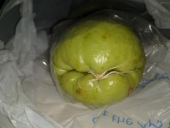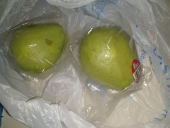All chayote that you purchase at grocery stores or markets are imported and grown mostly in high altitude regions. All imported chayote will sprout, grow roots and send up a vine. Almost none will fruit in North America. Worse yet, by planting produce as a garden vegetable, you risk introducing deadly plant diseases such as mosaic virus. Imported produce is not tested for plant disease since the USDA assumes that it will be consumed, not planted. I can only suggest that you wait until a seed provider of our heirloom mirliton (chayote) variety can be mailed to you, which will be soon. Please read our article "The History of Chayote (mirliton) in North America" on the problems of imported chayote.









